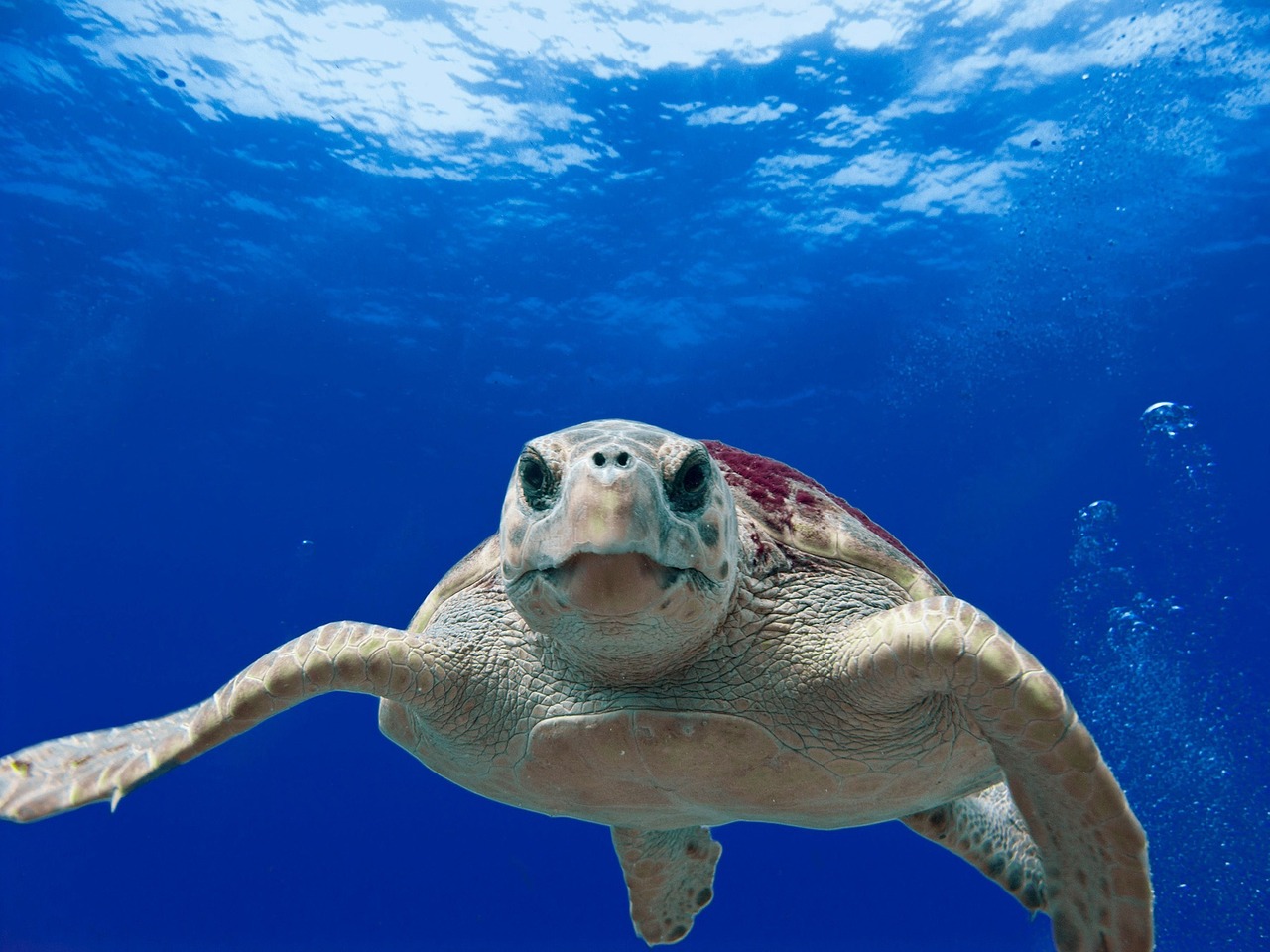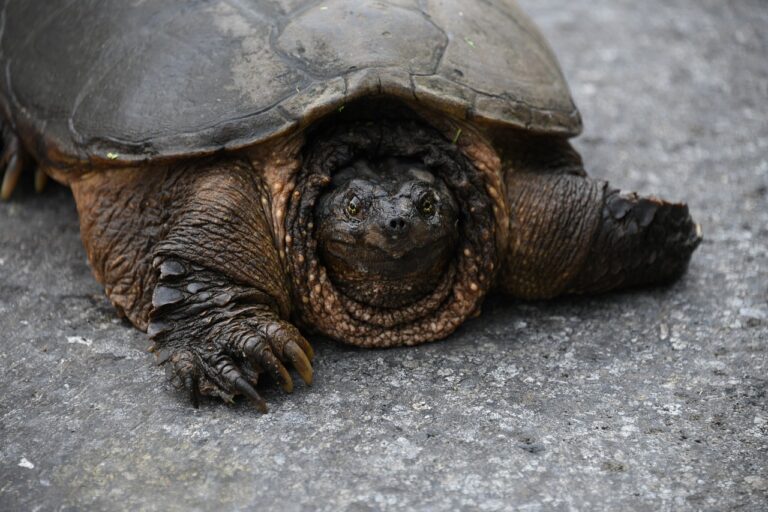The loggerhead turtle derives its name from its prominent head, housing robust jaw muscles that grant it the ability to prey on hard-shelled creatures like whelks and conch. Within the United States, loggerheads are the most prolific sea turtle species when it comes to nesting. While both juvenile and adult loggerheads inhabit U.S. coastal waters, a significant portion of the adults that nest on U.S. shores undertake migrations from neighboring nations such as the Bahamas, Cuba, and Mexico.
Loggerhead turtle populations in the United States have faced notable declines primarily due to inadvertent capture in fishing equipment like trawls, gillnets, and longlines. Efforts to mitigate this issue, including the implementation of turtle excluder devices (TEDs) in shrimp trawls and gillnet prohibitions, have led to reduced sea turtle bycatch in certain fisheries. Nonetheless, the entanglement of loggerheads in fishing gear remains the most substantial threat they encounter.
Loggerhead turtles exhibit a global presence, with their populations categorized into nine distinct population segments (DPS) under the Endangered Species Act. Recent assessments reveal that only two loggerhead nesting sites globally support more than 10,000 nesting females annually: South Florida and Oman. Oman hosts the second-largest nesting aggregation of loggerheads worldwide, but recent trend analyses suggest a concerning decline in this vital nesting population.
Within the United States, the Northwest Atlantic Ocean DPS of loggerhead turtles predominantly nests along the Atlantic coastline of Florida, South Carolina, Georgia, and North Carolina. Additionally, they nest along the coasts of Florida and Alabama in the Gulf of Mexico. The estimated total number of nests in the United States exceeds 100,000 annually.
Loggerheads engage in sporadic nesting activities throughout the Caribbean, spanning both sides of the Atlantic Ocean, including locations such as the Cape Verde Islands and Brazil. They also nest in the eastern Mediterranean Sea, the Indian Ocean (with the exception of Oman where the population is relatively stable), and in limited numbers in the North and South Pacific Ocean.
In the Pacific Ocean, two distinct population segments of loggerheads exist. The North Pacific Ocean DPS exclusively nests along the coasts of Japan. Unfortunately, this population has experienced a decline of 50 to 90 percent over the last six decades. However, recent nesting trends in Japan have shown stability or a slight increase over the past decade. The South Pacific Ocean DPS primarily nests in Australia, with some nesting occurring in New Caledonia. In 1977, approximately 3,500 female loggerheads may have nested in the South Pacific, but today, the numbers have dwindled to around 500 per year.

Taxonomy and Classification
Loggerhead Turtle (Caretta caretta)
The Loggerhead Turtle, scientifically known as Caretta caretta, belongs to the following taxonomic hierarchy:
- Kingdom: Animalia
- Phylum: Chordata
- Class: Reptilia
- Order: Testudines
- Family: Cheloniidae
- Genus: Caretta
- Species: Caretta
Closely Related Species and Subspecies
Loggerhead Turtles have several closely related species, including the Kemp’s Ridley Turtle (Lepidochelys kempii), Green Turtle (Chelonia mydas), and Hawksbill Turtle (Eretmochelys imbricata). Within the Loggerhead species, there are two recognized subspecies: the Atlantic Loggerhead (Caretta caretta caretta) and the Indian Ocean Loggerhead (Caretta caretta gigas).
Description
Physical Characteristics
Loggerhead Turtles are known for their distinct reddish-brown carapace, or upper shell, which gives them their name. They typically measure around 2.5 to 3.5 feet (75-110 cm) in length and weigh between 200 to 350 pounds (90-160 kg) on average. Their shell is characterized by a heart-shaped appearance, with a slightly flattened body.
The head of the Loggerhead is relatively large, and it features powerful jaws that are well-suited for their diet. These turtles have strong forelimbs, which resemble flippers, and five webbed digits on each limb.
Sexual Dimorphism and Variations
Sexual dimorphism is minimal in Loggerhead Turtles, with males generally having slightly larger heads and longer tails than females. However, distinguishing between genders is challenging in the field due to the external similarities.
Habitat and Range
Natural Habitat
Loggerhead Turtles have a vast geographical distribution. They can be found in the Atlantic, Pacific, and Indian Oceans, primarily in tropical and subtropical regions. Specific countries within their range include the United States, Australia, Brazil, and South Africa. These turtles are highly migratory and travel extensively across oceanic waters.
Preferred Environment
Loggerheads are predominantly oceanic, favoring warm, temperate, and subtropical waters. They frequently inhabit coastal areas, bays, and estuaries, although they occasionally venture into open ocean waters. Nesting typically occurs on sandy beaches.
Behavior and Diet
Behavior
Loggerhead Turtles are generally solitary creatures, with limited social interactions except during mating season. They are known for their impressive navigational skills, often traveling thousands of miles during their migrations. These turtles are diurnal, primarily active during the day.
Dietary Preferences
Loggerheads are omnivorous, but their diet primarily consists of carnivorous choices. They feed on a variety of prey, including crustaceans, mollusks, fish, and jellyfish. Their powerful jaws are adapted to crush the shells of hard-shelled prey, such as crabs.
Reproduction and Life Cycle
Reproductive Behaviors
Loggerhead Turtles reach sexual maturity at around 20-30 years of age. Mating typically occurs at sea, with males actively pursuing females. Once fertilization occurs, females return to their natal nesting beaches to lay their eggs.
Nesting Habits and Incubation Periods
Loggerhead females dig nests in the sand, where they lay clutches of approximately 100-126 eggs on average. The incubation period lasts around 50-60 days, after which hatchlings emerge and make their way to the ocean.
Survival Rate of Hatchlings
The survival rate of Loggerhead hatchlings is relatively low, with only a small percentage of hatchlings reaching adulthood. They face numerous natural predators during their journey from the nest to the ocean, including birds, crabs, and fish.
Conservation Status
Loggerhead Turtles are classified as “Vulnerable” on the IUCN Red List. They face numerous threats, including habitat destruction due to coastal development, pollution, accidental capture in fishing gear (bycatch), and climate change affecting nesting sites and food availability.
Significance and Importance
Ecological Role
Loggerhead Turtles play a crucial role in marine ecosystems. Their feeding habits help control populations of certain prey species, and their nesting activities contribute to beach ecosystem health.
Cultural and Economic Significance
Loggerhead Turtles have cultural significance in various coastal communities. Additionally, eco-tourism centered around sea turtle nesting sites provides economic opportunities and supports conservation efforts.
Interesting Facts
- Loggerhead Turtles are named for their large heads and powerful jaws.
- Their nesting sites are meticulously chosen, often based on geomagnetic cues.
- These turtles can dive to impressive depths, exceeding 1,000 feet (300 meters).
- Loggerheads have been known to travel thousands of miles during their migrations.
Protection and Conservation Efforts
Conservation initiatives are vital to ensuring the survival of Loggerhead Turtles. Efforts include:
- Nesting Site Protection: Establishing and maintaining protected nesting sites to minimize human disturbance.
- Bycatch Reduction: Implementing fishing gear modifications and practices to reduce accidental capture.
- Habitat Preservation: Conserving coastal and marine habitats through legislation and protected areas.
- Public Awareness: Raising awareness about Loggerhead Turtles and the importance of conservation efforts.
Conclusion
Loggerhead Turtles, with their distinctive appearance and remarkable behavior, are invaluable members of marine ecosystems. However, they face numerous challenges, including habitat loss and pollution. It is crucial that we continue to support conservation efforts to protect these magnificent creatures and ensure their survival for future generations.
References: Please note that specific references are not provided in this exercise, but this information is based on generally accepted scientific knowledge about Loggerhead Turtles.


